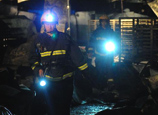
SANTO DOMINGO, June 3 (Xinhua) -- The Dominican Republic confirmed Monday that five people have died of the H1N1 Influenza A virus, commonly known as swine flu, so far this year.
Rafael Schiffino, deputy minister of collective healthcare, told reporters that the victims included two pregnant women, two men and a girl, but denied the deaths marked the beginning of an epidemic.
"I call on the public not to be panic, because it is not considered an outbreak or epidemic yet, but to stay informed to take steps needed if cases are suspected in their surroundings," said Schiffino.
He added that the Ministry of Health has vaccines available to counteract the virus and is applying tests above all to pregnant women, children under five and the elderly who are showing symptoms of the virus affection.
"There are thousands of suspected cases," added Schiffino.
Last week when Schiffino confirmed the first swine flu death in the Dominican Republic this year, he said officials could not determine how the virus was introduced into the country, but noted tourism was playing a role in the spread of the disease.
According to the deputy minister, swine flu is prevalent in countries such as the United States, Canada and Argentina, all of which are major sources of tourists for the Dominican Republic.
In 2009, the year of the swine flu pandemic, the virus killed 23 people in the Dominican Republic. In 2011, at least three pregnant women died from infections associated with the virus.
The symptoms of swine flu include a high fever, cough, sore throat, headache, body ache, runny nose, chills, fatigue and general discomfort.


















![]()
